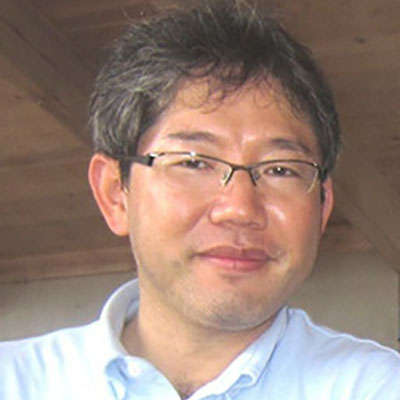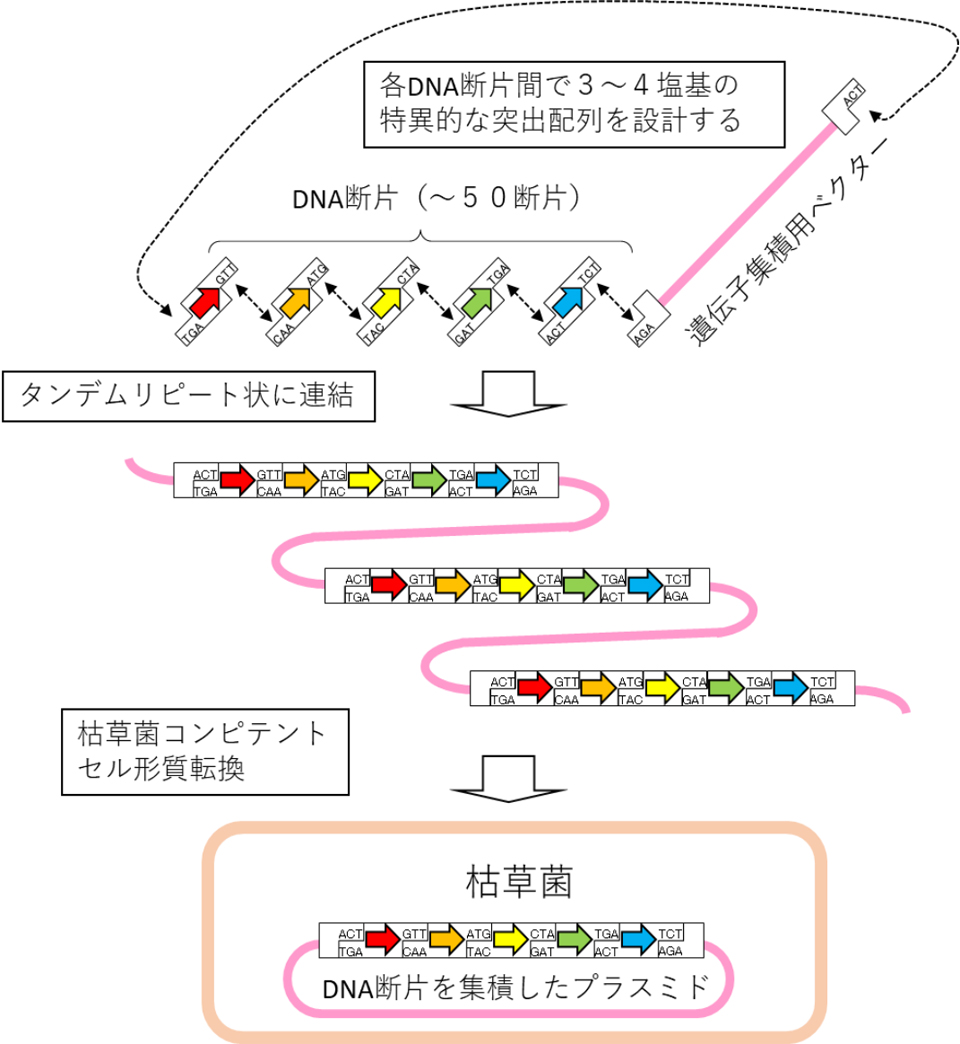Long-chain DNA Synthesis Technology
Kenji TSUGE
Graduate School of Science, Technology and Innovation, Kobe University


Kenji TSUGE
Graduate School of Science, Technology and Innovation, Kobe University


In the development of smart cells, the construction of bacterial strains with designed long-chain DNA sequences conventionally required several months, and this has been hindering the acceleration of the development. With this series of technologies we developed this time, it has become possible to accurately construct long-chain DNA of more than 30 kb in size in a short period of about 2 weeks at a low cost.
For constructing long-chain DNA, the ordered gene assembly in Bacillus subtilis (OGAB) method, which we developed, was used.1,2 The OGAB method is a method for assembling multiple DNA fragments using the plasmid transformation system of B. subtilis. Utilizing the specificity of 3 to 4 bases at the end of a DNA fragment, the method enables one-step assembly of a maximum of more than 50 DNA fragments. So far, this synthesis has been outsourced to a DNA synthesis company. When ordering the synthesis of 50 DNA fragments at a time, however, cases such as that where the synthesis of some fragments failed or was rejected occur although many DNA fragments are successfully synthesized. Accordingly, the synthesis sometimes takes as long as 2 months to finally prepare all the necessary DNA fragments.
Therefore, in order to shorten the time taken for DNA fragment preparation, a total system capable of one-stop processing, from the construction of long-chain DNA through chemical synthesis to mass preparation, was established, and technologies were developed from a comprehensive perspective. Individually, through joint research with Nihon Techno Service Co., Ltd., we have developed a high-throughput DNA chemical synthesizer specializing in the synthesis of long-chain DNA, at a low cost. In addition, we have also developed a new PCR method for annealing and elongating chemically synthesized DNA using DNA complementarity. This made it possible to prepare double-stranded DNAs of any sequence in about 3 days. In addition, the cloning process in Escherichia coli, in which this double-stranded DNA fragment is cloned in E. coli and only the selected clones having the correct base sequence are used as a material in the OGAB method, was substantially automated by a liquid dispensing robot. As a result of these research and development activities, it has become possible to produce long-chain DNA of about 30 kb in a short period of about 2 weeks at a cost of several yen per base.

OGAB法
The OGAB method allows inexpensive, short-time synthesis of long-chain DNA that could not be synthesized conventionally due to the long period of time required or high GC contents. The achievements from this research and development were commercialized as a long-chain DNA synthesis business by Synplogen Co., Ltd., a business venture spun off from Kobe University.
1) K. Tsuge et al. : Nucleic Acids Res., 31, e133 (2003)
2) K. Tsuge et al. : Sci. Rep. , 5, 10655 (2015)
Japanese Patent No. 4479199 Japanese Patent No. 6440636
Last updated:December 25, 2023